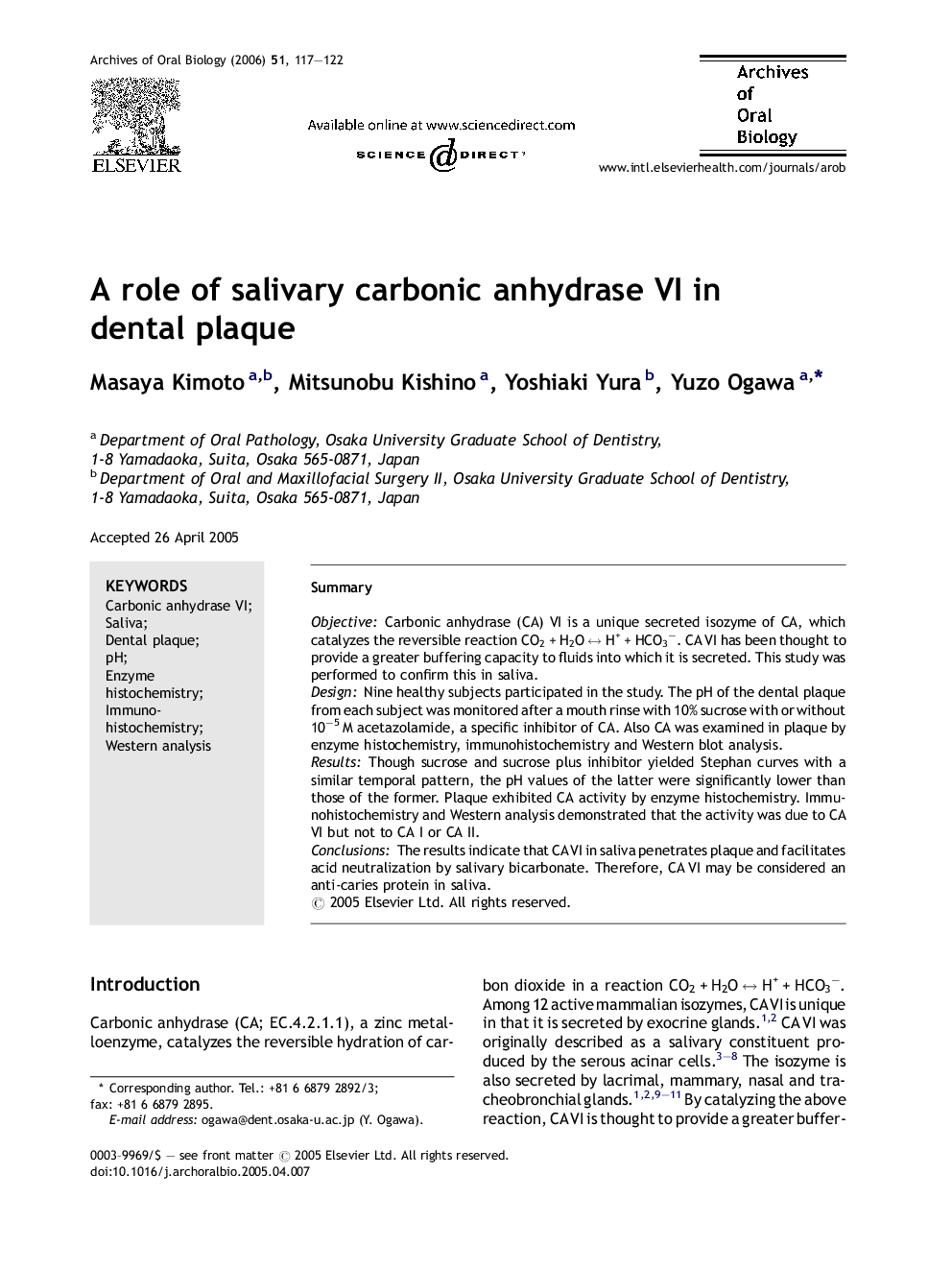| Article ID | Journal | Published Year | Pages | File Type |
|---|---|---|---|---|
| 3121936 | Archives of Oral Biology | 2006 | 6 Pages |
SummaryObjectiveCarbonic anhydrase (CA) VI is a unique secreted isozyme of CA, which catalyzes the reversible reaction CO2 + H2O ↔ H+ + HCO3−. CA VI has been thought to provide a greater buffering capacity to fluids into which it is secreted. This study was performed to confirm this in saliva.DesignNine healthy subjects participated in the study. The pH of the dental plaque from each subject was monitored after a mouth rinse with 10% sucrose with or without 10−5 M acetazolamide, a specific inhibitor of CA. Also CA was examined in plaque by enzyme histochemistry, immunohistochemistry and Western blot analysis.ResultsThough sucrose and sucrose plus inhibitor yielded Stephan curves with a similar temporal pattern, the pH values of the latter were significantly lower than those of the former. Plaque exhibited CA activity by enzyme histochemistry. Immunohistochemistry and Western analysis demonstrated that the activity was due to CA VI but not to CA I or CA II.ConclusionsThe results indicate that CA VI in saliva penetrates plaque and facilitates acid neutralization by salivary bicarbonate. Therefore, CA VI may be considered an anti-caries protein in saliva.
